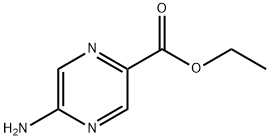The world's first successful treatment of rare genetic diseases in the womb is truly astonishing. But how exactly was this groundbreaking procedure carried out? What specific genetic diseases were targeted? Were there any risks involved for the mother and the fetus during the treatment? How long will the positive effects of this treatment last? Will this method be applicable to a wider range of genetic disorders in the future? And most importantly, can this be replicated in other medical facilities around the world? This treatment has the potential to change countless lives, but there are still many questions that need to be answered.
First in the World! Is the Successful Treatment of Rare Genetic Diseases in the Womb a Medical Miracle?
Related Products More >
-
- 9003-05-8
- USD 30.0000
- 25kg
-
- 9003-05-8
- USD 30.0000
- 25kg
-
- 108-80-5
- USD 50.0000
- 50kg
-
- 9001-62-1
- equest For Quotation
-
- 59-30-3
- equest For Quotation



 沪ICP备2021018848号-5
沪ICP备2021018848号-5

In the past decade, the FDA has approved three drugs for treating spinal muscular atrophy in newborns. The drug used in this study is called Risdiplam. It's an oral drug made by Roche, a biotech company in Basel, Switzerland. It's a small molecule drug that works by changing the expression of the SMN2 gene to produce more of that important SMN protein.
Until now, treatments for spinal muscular atrophy were always done after the baby was born. But a lot of newborns, up to half of them, who lack two copies of the SMN1 gene and have only two copies of the SMN2 gene, already show some symptoms at birth. Richard Finkel, the clinical neurologist from St. Jude Children's Research Hospital who led this study, said there was still room for improvement.
The idea of giving the drug in the womb actually came from the parents. They had suffered losses due to this terrible disease and wondered if there could be a treatment that could start before birth. The FDA approved the study for this particular case.
The mom, who was 32 weeks pregnant, took Risdiplam every day for six weeks. And the baby started taking the drug when she was about one week old and will likely keep taking it for the rest of her life.
Tests on the amniotic fluid and umbilical cord blood when the baby was born showed that the drug had reached the fetus. Compared to other babies born with the same disease, this little girl has more SMN protein in her blood and less nerve damage. She doesn't show any signs of muscle weakness and her muscles are developing just fine.
Finkel said this is really reassuring, but he also suggested lifelong monitoring for the child. Even though this is just one case, this study really shows how important early treatment is. The treatment window we're aiming for is really narrow.
The researchers said this positive result opens the door for larger - scale studies to see if these findings can be replicated. It also increases the possibility of treating other genetic diseases in the womb if the post - birth treatments aren't good enough.